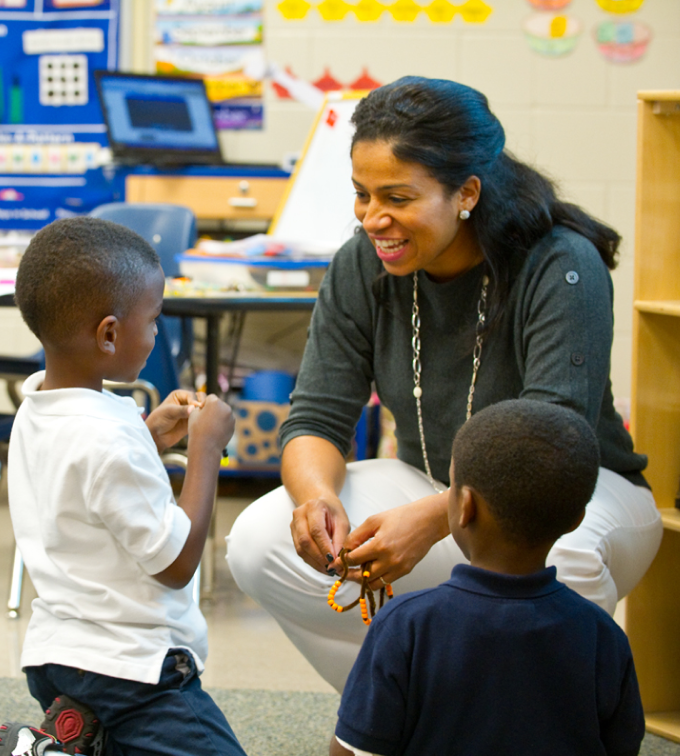Master Primary Science Concepts with Quality Tuition in Singapore
Master Primary Science Concepts with Quality Tuition in Singapore
Blog Article
A Comprehensive Overview to the Numerous Learning Approaches in Key Scientific Research Guideline
The expedition of varied understanding methods in main science direction presents a chance for educators to enhance student involvement and understanding significantly. By analyzing hands-on knowing techniques, inquiry-based methods, and joint methods, we can recognize reliable methods that cater to numerous finding out designs.

Hands-On Knowing Strategies
Hands-on learning methods play a pivotal function in key science instruction, engaging students in active expedition and trial and error. These techniques permit learners to connect straight with products and sensations, promoting a much deeper understanding of clinical ideas. By utilizing manipulatives, versions, and real-life experiments, instructors produce an environment where students can observe, hypothesize, and evaluate their concepts.
Such strategies not only improve comprehension yet additionally grow crucial thinking and problem-solving skills. When students get involved in activities like developing basic devices, growing seeds, or performing chemical reactions, they are encouraged to ask questions and look for answers via their own monitorings. This experiential approach aids to demystify intricate clinical concepts, making them more relatable and available.
Furthermore, hands-on learning promotes cooperation among peers, as pupils usually function in groups to perform experiments or share searchings for. This teamwork not just enhances their discovering experience but additionally creates vital social abilities. Ultimately, integrating hands-on strategies in main science guideline promotes a long-lasting love of knowing and inquisitiveness about the all-natural world, laying a solid foundation for future academic quests in science and beyond.
Inquiry-Based Learning
Inquiry-based discovering is a training method that motivates trainees to ask questions, check out sensations, and construct their very own understanding of scientific principles. This approach changes the focus from conventional teacher-led instruction to a more student-centered experience, where learners take the campaign in their instructional journey. By promoting inquisitiveness, inquiry-based learning advertises deeper engagement with the product, allowing pupils to check out subjects in a significant context.
In practice, this method often includes hands-on experiments, monitorings, and critical reasoning activities that straighten closely with the clinical approach. Trainees are motivated to create hypotheses, style examinations, and analyze information, which cultivates important abilities such as analytical and analytical reasoning. The function of the instructor in this framework is to promote exploration, guiding pupils via the questions procedure while encouraging independent thought and partnership.
In addition, inquiry-based understanding nurtures a sense of possession over the discovering procedure, motivating pupils to seek knowledge actively. This approach not only boosts understanding of scientific ideas however additionally cultivates a lifelong love for discovering, gearing up pupils with the abilities essential to navigate a progressively complex world.
Collaborative Discovering Approaches
Collaborative knowing approaches equip trainees to participate in significant interactions with peers, promoting a common responsibility for their instructional end results. In key science instruction, these methods urge learners to interact to explore scientific concepts, solve issues, and carry out experiments (primary science tuition Singapore). By joining group activities, students can take advantage of varied perspectives, allowing for richer understanding and retention of clinical expertise
One trick facet of collective learning is the focus on interaction abilities. Students should articulate their thoughts, listen proactively to others, and negotiate ideas, all of which are important proficiencies in both academic and real-world contexts. This social interaction not only enhances their understanding of scientific principles but likewise advertises teamwork and problem resolution abilities.
Moreover, joint knowing often brings about raised inspiration and engagement. They are a lot more most likely to take ownership of their understanding trip when pupils see the value of their contributions within a group. Teachers can promote this process by designing structured team tasks that align with curriculum goals while offering assistance on effective collaboration methods. In general, incorporating joint learning strategies in primary science guideline cultivates a dynamic discovering atmosphere that prepares pupils for future academic and social obstacles.
Modern Technology Assimilation in Science
The assimilation of technology in main scientific research direction improves learning experiences by supplying cutting-edge tools and resources that sustain numerous mentor approaches, consisting of collaborative knowing - primary science tuition Singapore. Using digital systems, simulations, and interactive applications allows students to involve deeply with scientific ideas, facilitating a much more hands-on technique to discovering
Digital research laboratories, for example, enable learners to carry out experiments securely and efficiently, advertising inquiry-based discovering. These devices can replicate real-world clinical situations, permitting students to picture intricate processes that would be tough to reproduce in a conventional classroom setting. Innovation fosters interaction and cooperation among students, as they can share searchings for and work with each other on jobs through on-line systems.
Additionally, multimedia discussions and academic videos can improve lessons by catering to varied discovering styles, making abstract ideas much more accessible. Information analysis tools also equip trainees to collect and analyze scientific information, reinforcing critical believing skills. Generally, the strategic unification of technology in main scientific research direction not just enhances interaction but likewise prepares pupils my response for a technically innovative society, outfitting them with important abilities for future clinical endeavors.
Separated Guideline Techniques
Set apart instruction techniques are necessary for addressing the diverse requirements of students in key science education. These techniques make it possible for instructors to tailor their teaching techniques to fit differing capabilities, passions, and finding out designs within the classroom. By employing distinguished direction, instructors can produce a comprehensive setting that cultivates involvement and enhances understanding of scientific concepts.
One effective technique is to utilize versatile organizing, which enables trainees to work together with peers at similar skill levels or with differing perspectives. This method encourages peer learning and promotes critical thinking. In addition, supplying selections in tasks can equip trainees, allowing them to select projects that resonate with their interests while still fulfilling curricular goals.
Additionally, integrating tiered assignments is another beneficial method. By creating tasks with varying degrees of complexity, educators can make certain that all pupils are properly challenged, no matter of their efficiency. Utilizing developmental evaluations to gauge recognizing additional enables instructors to adjust their educational techniques dynamically, ensuring that each student receives the assistance they need.
Eventually, executing differentiated direction strategies in key science education and learning not only improves student discovering outcomes yet also grows an interest for science, preparing trainees for future scholastic quests.

Final Thought
In summary, efficient primary science instruction requires a multifaceted technique that encompasses hands-on discovering, inquiry-based methods, and collaborative methods. The assimilation of innovation and differentiated direction better accommodates varied learning styles, cultivating an environment for expedition and critical thinking. By carrying out these approaches, teachers can boost student interaction and understanding, inevitably supporting a lifelong enthusiasm for scientific research and questions. Such comprehensive techniques are important for developing educated and interested future researchers.
The recommended you read exploration of diverse knowing approaches in key scientific research direction presents an opportunity for educators to boost pupil interaction and comprehension considerably.Hands-on knowing techniques play a crucial duty in main science guideline, involving students in energetic expedition and testing.Inquiry-based learning is an educational technique that motivates pupils to ask concerns, examine sensations, and build their own understanding of clinical concepts.Joint site link knowing approaches encourage students to involve in meaningful communications with peers, promoting a common obligation for their instructional results. On the whole, integrating joint discovering approaches in key science direction grows a dynamic understanding atmosphere that prepares pupils for future academic and social difficulties.
Report this page